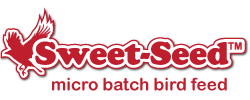Don't Freeze Up – Keep Nectar Liquid in a Frost

When temperatures start to drop and frosts occur nightly in late fall and early winter, hummingbirds are long gone, right? Not always! Some hummingbirds overwinter in cooler areas, some may be late on their annual migration and some may be lost and looking for a snack far outside their expected ranges. Whatever the reason, however, these birds can easily get caught out on chilly nights, when most nectar-rich flowers are no longer blooming. These late hummingbirds or overwintering guests rely on feeders for an extra burst of energy to refuel or reenergize themselves. The same cold nights that can endanger hummingbirds, however, and also turn a hummingbird feeder into a nectar popsicle the birds can't sip. It is critical that hummingbird lovers take steps to be sure their nectar remains liquid for birds to access, even after the chilliest nights.
Keeping Nectar Liquid
When the evening and overnight temperatures are low enough to cause a sheet of ice to form in a bird bath or frost to appear on the grass, it is time to take steps to keep nectar from freezing. Easy and effective options include…
Sweetening the Solution Making the nectar slightly sweeter will lower its freezing point by a degree or two, which may be just enough to keep it liquid and accessible to hungry hummers that may even appreciate the extra jolt of energy from sweeter nectar. Be cautious with this approach, however, because if the nectar is too sweet it may crystallize more quickly and clog narrow feeding ports. To avoid this, use saucer-style hummingbird feeders. Very super-sweet nectar may also be less attractive to hummingbirds, so only sweeten the nectar slightly and use other techniques simultaneously to keep the nectar flowing.
Light Equals Heat Light up your nectar feeders to heat them up and keep the nectar from freezing. Use a bare incandescent lightbulb such as a flood light or work light, and position the bulb 8-12 inches from the nectar reservoir. The heat the bulb generates can be just enough to keep the nectar liquid, and it will also provide a spotlight to draw attention to the feeder to catch hummingbirds' notice. Another option is to wrap a small strand of classic twinkle lights – not no-heat LED bulbs – around the feeding reservoir, which works best on glass feeders. Be sure all cords and electric connections are rated for outdoor use, however, to avoid any risk of shorts or fire.
Provide Proper Insulation Insulating a feeder can keep the temperatures of the nectar just high enough to avoid any ice formation. Wrap bubble wrap or similar insulating material around the nectar reservoir, taking care not to block any feeding ports or perches. No dangling fibers or other material should be accessible to birds where they can be a tangling or sticking hazard. If you hang the feeder in a sunny spot during the day, the insulation can help it hold that heat and keep the nectar liquid through the night.
Block Ice With Baffles Not all nectar feeder ice forms inside the feeder. In snowy conditions, freezing rain, sleet or snow can build up on the feeder and ice over the feeding ports, keeping birds from sipping the nectar. Use a broad, sturdy baffle to block snow and ice and keep the feeder clear. A dark-colored baffle can be even more effective, because it will absorb solar radiation during the day and return that heat to the surrounding area, including the nectar reservoir, at night.
Indoor Options In very cold conditions, such as a sudden cold snap or rapidly moving cold front, it may be best to bring hummingbird feeders indoors at night to keep the nectar from freezing. Hummingbirds do not feed at night so they won't miss the feeder, but be sure it is put out very early the next morning – ideally before dawn breaks – so it is available to the earliest-rising hummingbirds as they refuel for the day.
A Note About Migration
Taking steps to keep nectar from freezing may seem harmful to hummingbirds, keeping them in colder areas where they don't belong in wintertime. The truth is just the opposite, however – these feeders actually help hummingbirds to survive their migration. It isn't the amount of available food, but the daily sunlight levels that tell hummers when it is time to migrate. In a poor flower year with colder weather, frosts could occur before the birds get that daylight clue for migration, and feeders that aren't frozen can give the birds the boost they need to migrate successfully.
Time to Take the Feeder Down
As the days get colder and daylight gets shorter, hummingbirds will continue on their way. Watch your feeder carefully, and when it is has been 10-14 days since you saw your last hummer, you can feel good about removing the feeder for the winter without depriving any late hummingbirds of those last sweet sips. No need to worry about frost anymore – at least until very early spring when the birds may begin to arrive again!
Image by Steve Crowhurst from Pixabay
